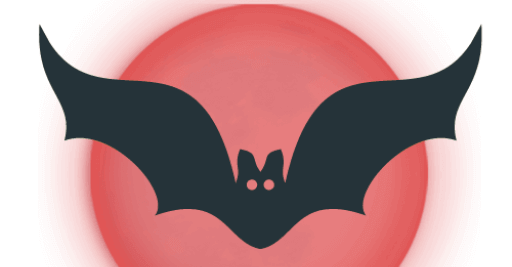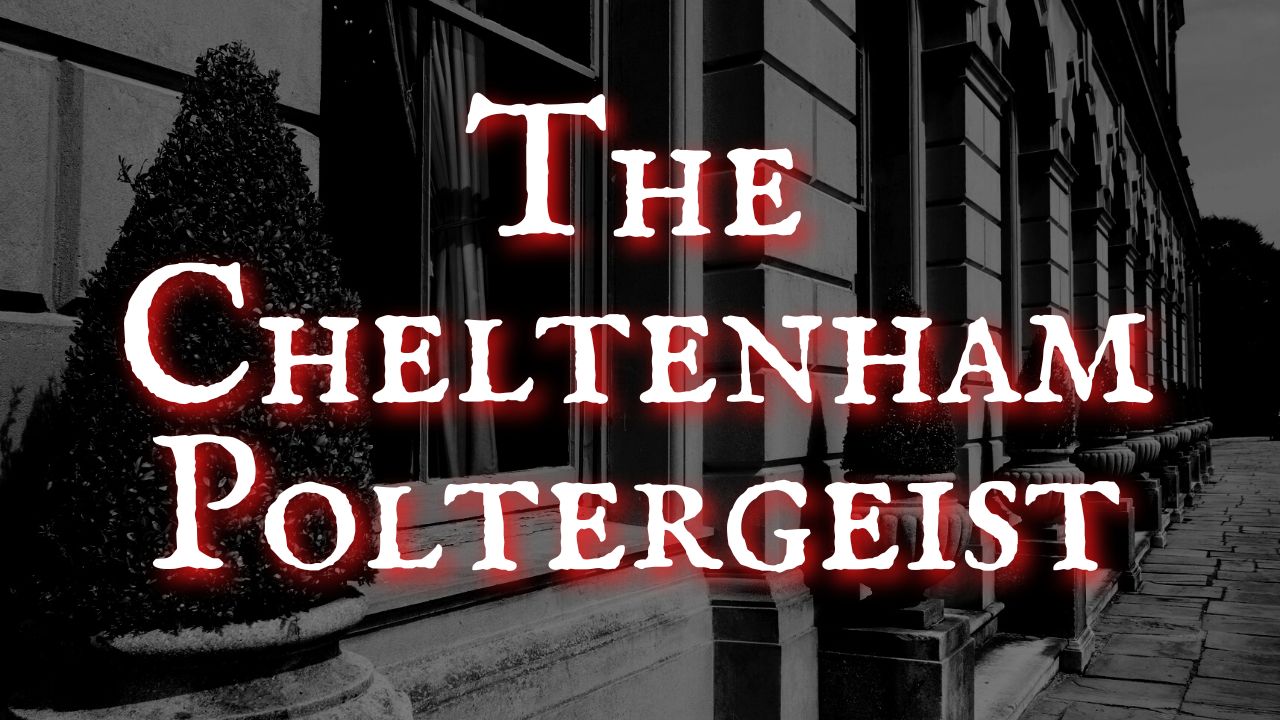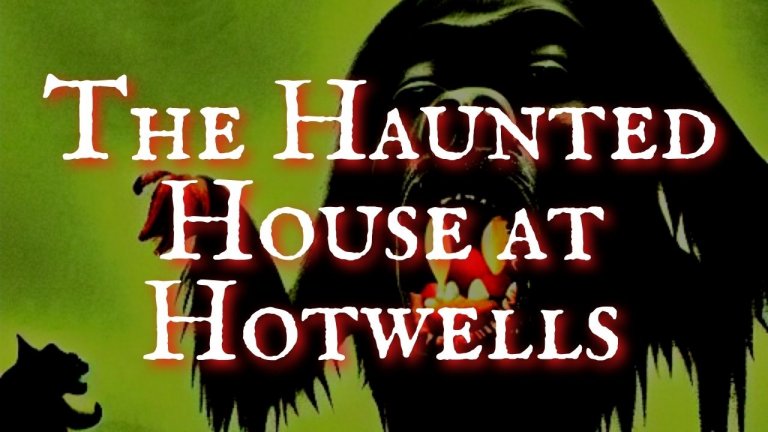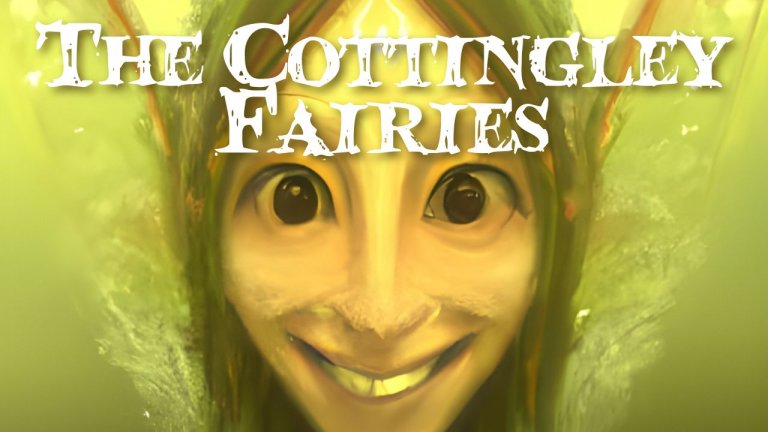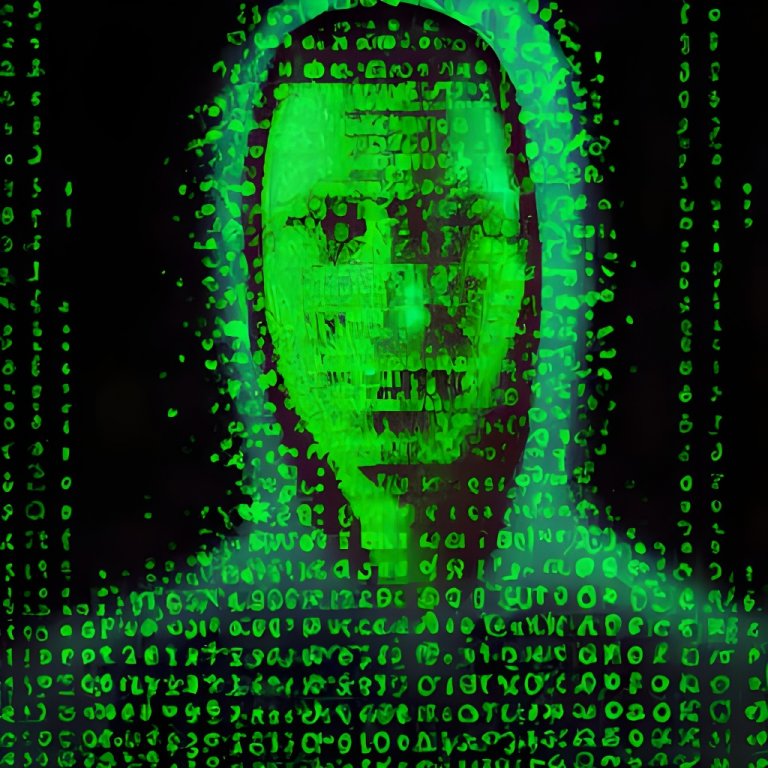The True Story of the Cheltenham Poltergeist
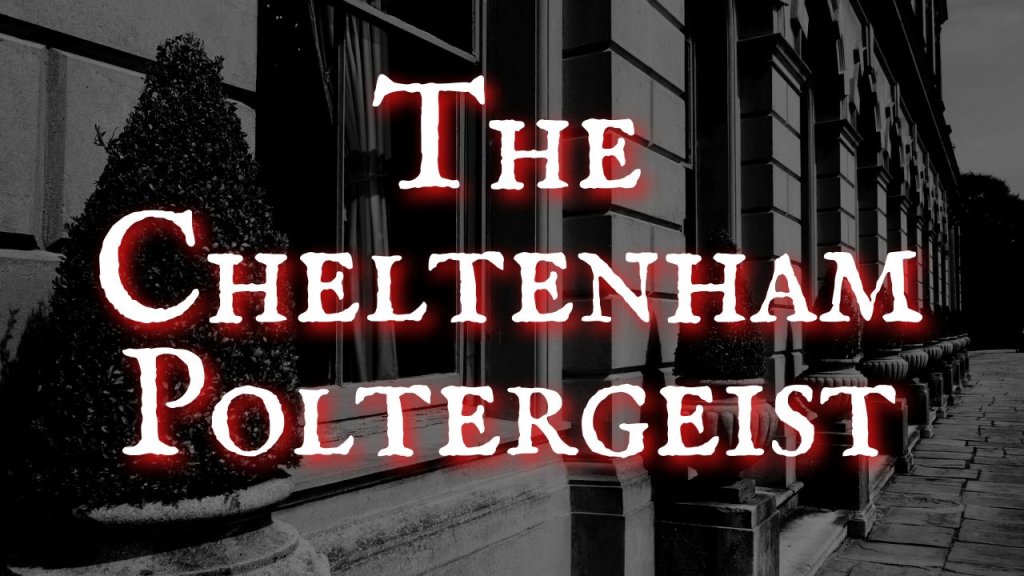
A Haunted House In Cheltenham
Cheltenham is a pretty, and quite wealthy town in Gloucestershire in the southwest of England. The Cheltenham Poltergeist case happened in a building that is still standing. The house on Pittville Circus Road is a grand Victorian home with a double front and four floors. Over the years, the house has had many names. It was called Garden Reach at first, then Pitville Hall, then Donore House, then Inholmes, and now it is called St. Anne’s. It was about the size of a typical Victorian mansion for the well-to-do, originally was built in the days of Queen Victoria on the site of a market garden in the 1860s — hence its first name.
It was on a large piece of land and had a small carriage drive in front, as well as large lawns and an orchard. Even though the house is still there, the grounds have changed a lot. Where the garden used to be, a group of small bungalows called St. Anne’s Close has been built, and several of the buildings in the area have been torn down and replaced with apartment buildings. The house is itself split up now into flats.
The history of the house is that Henry Swinhoe, a lawyer from Calcutta, bought “Garden Reach” from the man who built it. He married Elisabeth Francis Higgins in India on February 6, 1851. Together, they had five children. Elisabeth died on August 11, 1866, when she was 35 years old.
Elisabeth died on August 11, 1866, when she was 35 years old. His second wife was Imogen Hutchins of Clifton, Bristol, but they fought a lot. It seems like they fought about how to raise Swinhoe’s children and who should keep the former Mrs. Swinhoe’s jewellery, which Henry hid in a secret place under the floor of the drawing room.
Things didn’t get better after Henry Swinhoe’s descent into alcoholism. One version of the story says that when Elisabeth died, Henry was so sad that he started drinking, and Imogen soon followed suit.
But when the late Andrew Mackenzie, who spent many years researching the Cheltenham case, talked to one of Henry Swinhoe’s surviving granddaughters, she said that Imogen was to blame. She was said to be an alcoholic, which Henry didn’t find out about until after they were married, and she was the one who led her new husband down the path to ruin.
Whatever the truth was, Henry and Imogen Swinhoe broke up early in 1876. Imogen went back to Bristol, and Henry stayed at “Garden Reach” for a few more months before dying on July 14, 1876.
After Henry Swinhoe died, the house was empty until 1879, when Benjamin Littlewood bought it and changed its name to “Pittville Hall.”
He only lived there for a month before he too died on August 5, 1879. His widow quickly moved to a smaller house on the same road. For two and a half years, no one lived in the house.
The Despards then moved in. When the Despards moved into the house, the rent was much lower than it would have been for a house like that in that area so it is possible that the house’s reputation as a haunted house was already well known.
The house’s many name changes are also a sign that it may have had a terrible reputation.
When the Despards left, the house was empty for five years. Then it was converted into a private school which opened in 1898 and stayed open for nine years.
After another period of lying empty, a group of nuns lived in the house from 1910 to 1912. During that time, a small chapel was added to the side.
The St. Anne’s Nursery College, which taught nannies, used the address for over quarter of a century from 1912 to 1937. During that time, it also changed its name to St Anne’s
From 1937 to 1970, the Diocese of Gloucester used it as a place for their staff and guests to stay in Cheltenham.
In 1973, a housing association bought the empty house and turned it into flats, as stated above.
The Despard Family
In March 1882, Captain Frederick W. Despard and his family moved into the house, which was now called “Donore House.” In the investigation reports, the Despards were known as The Mortons. Their true name of Despard wasn’t known until much later. The Despards lived at “Donore House” for just over ten years until 1893.
The Despards were a large Victorian middle-class family. They were wealthy enough to have servants, a coachman, and a gardener living in.
Born in Ireland, Frederick W. Despard was in his early fifties. He had been in the Army most of his and his children’s birth certificates show he had traveled to many places.
Rosina Meredith Despard, his first wife, died in Cheltenham in 1858, probably while giving birth to his oldest daughter Freda.
The family line up included Captain Despard, his invalid second wife, his six children, including a son and his daughters, ‘E’, ‘M’ and Rosina Despard. The married eldest daughter, Freda Kinlock visited with her husband.
Captain Despard kept the story of the haunting to his own family because he didn’t want to inconvenience his landlord.
Miss Despard’s Account
Rosina Clara Despard was 19 when the events started. She was named after her mother. She was an intelligent young woman and later became a doctor. Rosina was the main person — but not the only one — who saw the ghostly woman in black.
Rosina wrote every time the apparition showed up in letters sent to a friend, Miss Catherine Campbell.
The 1892 report in the SPR’s Journal sets out this correspondence, though Rosina’s original letters don’t seem to have been saved, as Miss Campbell didn’t give them to the SPR because they included private and personal information as well as stories about ghosts.
Rosina first saw an apparition at the end of April 1882, two months after the Despards moved into their new home. After she went to bed one night, she was woken up by the sound of someone knocking on her door. She went to the door because she thought it was her sick mother. When she opened the door, she saw the ghost.
“We moved in towards the end of April and it was not until the following June that I first saw the apparition. I had gone up to my room but was not yet in bed when I heard someone at the door and went to it thinking that it might be my mother. On opening the door, I saw no one but on going a few steps along the passage; I saw the figure of a tall lady dressed in black, standing at the head of the stairs.”
After a few moments, she descended the stairs, and I followed for a short distance, feeling curious about what it could. I had only a small piece of candle and it suddenly burnt itself out and being unable to see more. I went back to my room. She was dressed in a soft material judging by the sounds of movement.
The face was hidden by a handkerchief held in the right hand. This is all I noticed then, but on further occasions when I was able to observe her more closely. I saw the upper part of the left side of the forehead and a little of the hair above her left hand was nearly hidden by her sleeve and a fold of her dress.
As she held it down, a portion of a widow’s cuff was visible on both wrists, so that the whole impression was that of a lady in widow’s weeds. There was no cap on the head, but a general effect of blackness suggests a bonnet with a long veil on the lower part of her face.
During the next two years, from 1882 to 1884, I saw the figure at first at long intervals and afterwards at shorter, but I only mentioned these appearances to one friend who did not speak of them to anyone during this period.”
As far as we know, there were only three appearances to anyone else.
“The first in the summer of 1882 was to my sister, Mrs. K, when the figure was thought to be that of a visiting nun. And no further curiosity was aroused. My sister was coming down the stairs rather late for dinner at 6:30 PM It then being quite light when she saw the figure cross the hall in front of her and pass into the drawing room.
She then asked the rest of us already seated a dinner. “Who was that Sister of Mercy who I have just seen going into the drawing room?”
She was told that there was no such person, and a servant was sent. But the drawing room was empty, and she was sure that no one had come in. Mrs. K persisted, that she had seen a tall figure in black with some white about it, but nothing further was thought of the matter.
The second appearance in the autumn of 1883 was seen by the housemaid about 10 p.m. She declared that someone had got into the house. Her description agreed fairly with what I had seen. But as on searching, no one was found. Her story received no credit.
The Haunting Reaches Its Peak
Between July and August 1884, the haunting was at its worst. All together, by different family members it was seen more than a dozen times.
“On or about December 18th, 1883. It was seen in the drawing room by my brother and another little boy.
They were playing outside the terrace when they saw the figure in the drawing room close to the window and ran in to see who it could be that was crying so bitterly; they found no one in the drawing room and the parlourmaid told them that no one had come into the. After the first time, I followed the figure several times downstairs into the drawing room where she remained a variable time, generally standing to the right-hand side of the bow window from the drawing room.
She went along the passage towards the garden door where she always disappeared. The first time I spoke to her was on 29th January, 1884. I opened the drawing-room door softly and went in standing just by. She came in past me and walked to the sofa and stood still there. So I went up to her and asked if I could help her.
She moved, and I thought she was going to speak, but she only gave a slight gasp and moved towards the door just by the door. I spoke to her again, but she seemed as if she were quite unable to speak. She walked into the hall, then by the side. She seemed to disappear as before in May and June, 1884. I tried some experiments fastening string with marine glue across the stairs at different heights from the ground.
I also attempted to touch her, but she always eluded me. It was not that there was nothing there to touch, but that she always seemed to be beyond me. And if followed into a corner, simply dis. During these two years, the only noises I heard were those of slight pushes against my bedroom door, accompanied by footsteps.
And if I looked out on hearing these sounds, I invariably saw the figure, her footstep was very light. You could hardly hear it except on the linoleum. And then only like a person walking softly with thin boots on the appearances during the next two months, July and August, 1884 became much more frequent indeed.
On July 21st, I went into the drawing room where my father and sisters were sitting about nine in the evening and sat down on a couch close to the bow window. A few minutes later, as I sat, reading, I saw the figure come in at the open door, cross the room, and take up a position close behind the couch where I was.
I was astonished that no one else in the room saw her as she was so very distinct to me. My youngest brother, who had before seen her, was not in the room. She stood behind the couch for about half an hour, and then as usual, walked to the door. I went after her on the excuse of getting a book and saw her pass along the hall until she came to the garden door where she disappeared.
I spoke to her as she passed the foot of the stairs, but she did not answer, although as before, she stopped and seemed as though about to speak.
Oon July 31st, sometime after I had gone to bed. My second sister E, who had remained downstairs talking in another sister’s room, came to me saying that someone had passed her on the stairs.
I tried then to persuade her that it was one of the servants, but next morning found that it could not have been so as none of them had been out of their rooms at that hour. A more detailed description, tallied with what I had seen.
On the night of August 1st. I again saw the figure. I heard the footsteps outside on the landing about two.
I got up at once and went outside. She was then at the end of the landing at the top of the stairs, then went downstairs, stopping again. When she reached the hall below, I opened the drawing-room door and she went in, walked across the room to the couch in the bow window. Stayed there a little while, then came out of the room, went along the passage and disappeared by the garden door.
I spoke to her again, but she didn’t answer. On the night of August 2nd, the footsteps were heard by my three sisters and by the cook, all of whom slept on top landings, also by my marriage sister, Mrs. K., who was sleeping on the floor below. They all said the next morning that they had heard them very plainly pass and repass their doors.
The cook was a middle-aged and very sensible. She told me that she had heard these footsteps before and that she had seen the figure on the stairs one night when going down to the kitchen to fetch hot water After the servants had come to bed. She described it as a lady in a widow’s dress, tall and slight with her face hidden in a handkerchief held in her right hand.
Unfortunately, we have since lost sight of this servant. She left us about a year afterwards on her mother’s death, and we cannot now trace. She also saw the figure outside the kitchen windows on the terrorist walk. She herself being in the kitchen. These footsteps are very characteristic and not at all, like those of any of the people in the house, they’re soft and rather slow though, are decided.
And even my sisters would not go out on the landing after hearing them pass, nor would the servants. But each time when I have gone out after hearing. I have seen the figure there on August 5th. I told my father about her and what we had seen and heard. He was much astonished, not having seen or heard anything himself at that time.
Neither then had my mother, but she is slightly deaf and is an invalid. On August 6th, a neighbour general A. who lived opposite, sent his son to inquire after my married sister, as he had seen a lady crying in our orchard, which is visible from the road. He described her to his son and afterwards to us as a tall lady in black and a bonnet with a long veil crying with a handkerchief held up to her face.
He did not know my sister by sight, as she had been only with us a few days, but he knew that she was in mourning for her baby son. My sister was not in the orchard. That day is rather short and wore no veil. The same evening, this general A, came over to our house and we all took up various stations on the watch for the figure, which however, was not seen by anyone that night.
My brother-in-law and sister distinctly heard footsteps first going up the stairs and then down. This was about 2:00 AM on the evening of August 12th while coming up the garden. I walked towards the orchard when I saw the figure cross the orchard and then going along the carriage drive in front of the house and in at the open side door across the hall and into the drawing room.
As I followed, she crossed the drawing room and took up her usual position behind the couch. In the boat window. My father came in soon after, and I told him she was there. He couldn’t see the figure, but went up to where I showed him. She then went swiftly round behind him, across the room, out of the door, and along the hall, disappearing as usual near the garden door.
We both followed her. We looked out into the garden, having first to unlock the garden door, which my father had locked as he came through, but we saw nothing of her.
On the same evening, about 8:00 PM and still quite light, my sister E was singing in the back drawing room. I heard her stop abruptly, come out into the hall and called me.
She said she had seen the figure in the drawing room close behind her as she sat at the piano. I went back into the room with her and saw the figure in the bow window in her usual place. I spoke to her several times, but had no answer. She stood there for about 10 minutes or a quarter of an hour, then went across the room to the door, and along the passage, disappearing at the same place.
By the same. My sister M then came in from the garden saying she had seen her coming up the kitchen steps outside. We all three then went out into the garden when Mrs. K called out from a window in the first story that she had just seen her pass along the lawn in front and along the carriage drive towards the orchard this evening.
Then altogether, four people saw her. My father was then away and my youngest brother was, In the following year, the sound of footsteps was accompanied on occasions by heavy thuds and bumpings. Miss Despard goes onto note that the bumps against the bedroom door were so marked as to terrify a new servant, who had heard nothing of the haunting into the belief that burglars were breaking into her room.
While another servant who had a slight attack of facial hemiplegia attributed it to attempts at her door worse than usual.”
Other People See The Ghost
On a later occasion, two of the Despard girls, L and M, opened their door to say that they had heard noises, but also seen what they described as the flame of a candle without candle or hand visible, crossed the room diagonally from corner to door. Two of them pushed open the doors of their two bedrooms and said that they had also had heard noises.
They all stood at their doors with their lighted candles for some time. They all heard steps walking up and down the landing between them. As she passed, they felt a sensation, which they described as a chilly wind, though their candles were not blown out. They saw nothing. From 1887 to 1889. The figure was seldom seen, and the noises abated 1889 onwards, the phenomena in the house stopped all together.
In her later reflections, Miss Despard commented upon the impossibility of touching the figure.
“I have repeatedly followed it into a corner when it disappeared and have tried suddenly to pounce upon it, but have never succeeded in touching or getting my hand up to it, the figure eluding my touch. She also noted that although no one had ever seen the second Mrs. S,
“Several people who had known her, identified her from our photograph as the second Mrs. S was the wife who had departed for Clifton a few months before the death of her husband.”
Miss Despard recollected that on being shown a photo album containing a number of portraits.
“I picked out one of her sister as being much more like that of the figure and was afterwards told that the sisters were very much alike.”
Miss Despard noted that the dogs of the household, not the cats, were affected by the phenomena. Of her Skye Terrier, she described how it jumped up fawning as it would do if a person had been standing there, but suddenly slunk away with its tail between its legs and retreated trembling under a sofa.
Was The Ghost After Harry Swinhoe’s Jewels?
It’s not really clear from what I’ve read so far, where the jewels that the Henry Swinhoe had hidden as a dowry to his children were left under the floorboards when he died.
If they were, does this explain why the ghost always returned to stand in the same room and was so upset? The dead Imogen Swinhoe presumably was aggrieved that her alcoholic husband pined after his first wife and hid her jewels from her.
Sightings of the Cheltenham Ghost by Other People And At Other Times
In the autumn of 1886, Rosina heard that people in the area had heard stories that a tall woman in black had been seen in the grounds of the house before they moved there.
A gardener who had worked at a house across the street said he had seen a ghostly figure that looked like the one the Despards had seen.
In 1958, when a well-known spiritualist named Percy Wilson talked to people, Mrs. Maisley, who had lived in Cheltenham and said and she had seen a ghost in St. Anne’s garden.
In the early 1920s, another person who lived there said that he had often seen the ghost when he was a boy.
In 1944, a lawyer named George Gooding wrote to the Society for Psychical Research and said that he had known the Despard family when he was a young boy and had two clear memories of seeing the woman in black.
He says that she seemed to just walk out between two people and then vanish.
Not only that, but it was found that a figure that looked like the woman in black had been seen twice in 1958 and 1961 in a now demolished house that was on the other side of the street.
Then, on January 19, 1970, a Mrs. Jackson was taking a driving lesson at lunchtime. She drove past the gates of St. Anne’s, and then suddenly she changed gears and braked hard. Her instructor asked her what she was doing. He couldn’t see the tall woman in a long black dress reaching to the ground, but Mrs Jackson could. As the car screeched to a halt, Mrs Jackson told her instructor she had seen a tall woman in a long black dress who stepped off the kerb about 20 yards in front of her.
In July 1985, a music graduate from Oxford University who was in his sixties and a friend were walking along Pittville Circus Road around 10 p.m. when they saw a tall woman in black with a crinoline walking along the footpath of St. Anne’s Close toward where it met the main road. This was the second time that this had been reported. The person’s strangely old-fashioned look made them walk back to St. Anne’s Close, but by the time they got there, the figure was gone.
Frederic Myers Investigation
Frederic Myers was a long-standing member of the SPR (Society For Psychical Research). He investigated the so-called Morton Ghost (that was the pseudonym for the Despard family). 1882 marked the founding of the first serious organisation for the study of supernatural phenomena. The SPR was set up in London and apparitions and Haunted Houses, and Séances were the first things they studied. The society’s stated goal was to
“approach these different problems without bias or preconceptions of any kind, and with the same spirit of exact and dispassionate inquiry that has helped science solve so many problems that were once not less mysterious nor less hotly debated.”
The SPR still exists and researches poltergeists, ghost stories, orbs and other paranormal phenomena.
Myers published his results in a paper called The Cheltenham Ghost in 1892, which can be found here
https://psi-encyclopedia.spr.ac.uk/sites/default/files/cheltenham%20ghost%20jspr.pdf
Myers became aware of the case from a friend at Dalton Hall, Manchester who had got information from Despard.
“The first intimation which I received of the series of phenomena described below was in a letter received in December, 1884, from Mr. J. W. Graham, now Principal of Dalton Hall, Manchester.
Mr. Graham had heard an account from the gentleman mentioned below as Captain Morton; had written this account out from memory and had got it revised by Captain and Miss Morton.
This account, and Miss Morton’s letters to Miss Campbell which begin with the first appearance of the figure, are the earliest written records. Captain Morton was, for a time, unwilling to give further accounts, lest the house, which belonged to a friend of his, should again become depreciated in value; as it appears from Miss Morton’s record that it has previously been.
But on May 1st, 1886, he permitted me to call upon him; and from that date onwards, I visited him at intervals and took notes of what he told me.
I also saw Miss Morton and Miss E. Morton, and I interviewed at their own homes Mrs. Twining, a charwoman, and Mrs. Brown, a former parlour maid.
In this case, it is observable that the phenomena as seen or heard by all the witnesses were very uniform in character—even in the numerous instances where there had been no previous communication between the percipients.
I have found no discrepancy in the independent testimonies, when collected, with the unimportant exception of General A.’s inability or unwillingness to recall one incident, which was already included in Mr. Graham’s first account, soon after its occurrence, and six years before General A., an old man, was asked to repeat it.”
Dr Eric Dingwall of the SPR looked at the case again in the 1920s. He was more sceptical than Frederic Myers. Then, in the 1950s, SPR member Guy Lambert proposed that the knockings and sounds of footfall were caused by underground water.
Andrew MacKenzie Investigates The Cheltenham Ghost
Author Andrew MacKenzie also gathered accounts of what seemed to be poltergeist activity in the house during the 1970s. He wrote down reports of the Cheltenham ghost being seen occasionally in the area, which shows that the haunting went on for another century after the Morton case was over. Her picture became less clear over time. In a 1970 report, she was simply seen as a grey shape.
Conclusion
Rosina Despard wrote a very detailed investigation of what she saw. She was one of the principal witnesses, but not the only person to see the apparition.
She said that at first, it induced in her the feeling of awe of something unknown. Then after becoming more familiar with the phenomenon, she says, “I felt conscious of a feeling of loss as if I had lost power to the figure.”
Because the list of the sightings was so comprehensive with dates, places, and people and Rosina went on to be a doctor when it was very difficult for women to achieve such a position and that the same ghost was seen by many people in the Despards family but also by others with no connection to them, both before they moved into the house and nearly a hundred years later, long after Rosina’s death, I conclude I believe this to be a real haunting.
Related Posts You Might Enjoy:
Ghostly Events At Hinton Manor
Did A Ghost Speak Through A Machine Or Were The Dodleston Messages Fake?
